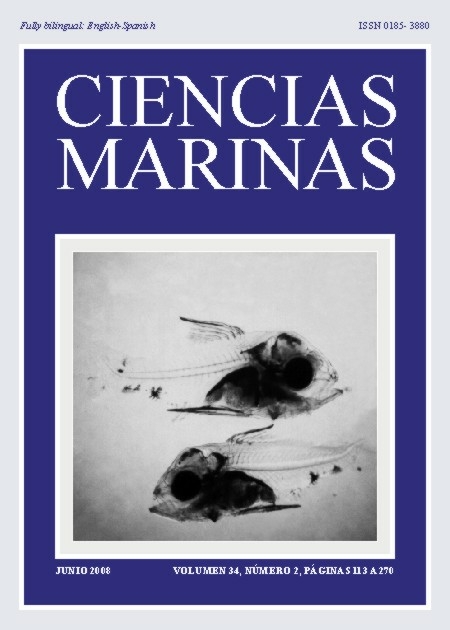Water column structure and phytoplankton biomass profiles in the Gulf of Mexico
Main Article Content
Abstract
Remote sensors provide information on the average photosynthetic pigment concentrations for the upper 22% of the euphotic zone. To model primary production in the water column from satellite-derived photosynthetic pigments, estimates of the vertical distribution of pigment concentration are required. A Gaussian distribution function was used to represent the pigment vertical profiles with four parameters. We used 352 chlorophyll concentration (Chlz) profiles generated during oceanographic cruises to the Gulf of Mexico to estimate these parameters for seasons and regions within the gulf. Cluster analyses of data on surface temperature and chlorophyll, Chlz at the deep chlorophyll maximum (DCM), and the depth of the DCM (Zm) were used to divide the Gulf of Mexico into three regions and the year into two seasons (cool and warm). Regression models were developed for each region and season to estimate Zm as a function of the mixed layer depth or an index of stratification. We were not able to generate useful regression models to predict the other three Gaussian parameters. Thus, representative means of these parameters were calculated for each region and season. Assuming a homogeneous biomass profile resulted in underestimation of integrated primary production by as much as 43% relative to the values derived from the nonhomogeneous profiles.
Downloads
Article Details
This is an open access article distributed under a Creative Commons Attribution 4.0 License, which allows you to share and adapt the work, as long as you give appropriate credit to the original author(s) and the source, provide a link to the Creative Commons license, and indicate if changes were made. Figures, tables and other elements in the article are included in the article’s CC BY 4.0 license, unless otherwise indicated. The journal title is protected by copyrights and not subject to this license. Full license deed can be viewed here.

